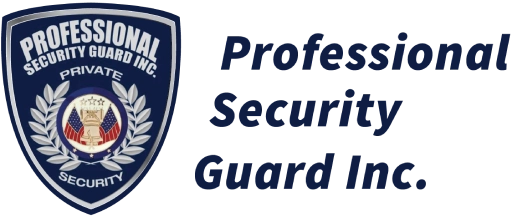In today’s world where globalization and digitalisation are at their peak, physical security is just as important as cybersecurity.
You would be surprised to know that the U.S. economy lost $114 million in 2016 due to cargo thefts. Compared to 2015, this is about 13.3% higher, totalling about $100 million.
Now you must be wondering what exactly is “physical security ” with respect to the warehouse.that businesses need.
The term “physical security” refers to protecting the business’s people, hardware, data, software, and physical assets against unforeseen actions or events that might result in damage. It protects you from theft, vandalism, burglary, fire, floods, and other natural disasters.
In this article, you’ll get to know some tremendously effective physical security tips in detail that can help you protect your facility from all potential threats.
Some Effective Physical Security Tips
Implement Secure Access Controls
A systematic approach in the business territory can ensure efficient operations, protect valuable assets, and promote productivity. Access control systems are a key tool for achieving this goal, as they allow businesses to control who enters and exits their premises.
Businesses can further enhance their security and prevent unauthorised access by installing deterrents such as steel gates, fences, screening devices, and CCTVs at entry and exit points. This can help to reduce the risk of theft, vandalism, or other forms of intrusion that could disrupt business operations or cause financial losses.
Use Video Surveillance
A surveillance system can include everything from patrolling guards to CCTV, monitored alarms, and video surveillance to infrared movement sensors.
Criminal activities around your property can easily be captured with these surveillance devices.
The biggest advantage is that you can view live footage and in the event of a criminal act, the visual evidence will assist the police in identifying the culprit.
For example, through video cameras or monitored alarms, you can easily detect any abnormal visuals and respond back to them. As a result, either the burglars end up being caught or are forced to run away barehanded.
Conduct Background Checks on Employees
Performing thorough background checks on potential new hires is a critical first step in ensuring the safety and security of your workplace.
Background checks should include verifying the candidate’s identity and employment history, conducting a credit history check, checking their driving record, reviewing any criminal history, and verifying their qualifications.
The specific details of the background check can vary depending on the industry and job requirements.
Train Employees on Security Awareness
Employees can play a crucial role when it comes to security if they are trained wisely. Following are some of the security awareness aspects that employees should be trained on:
Effective security training for employees can be crucial to maintaining a secure workplace. To ensure that your employees are well-equipped to handle security threats, it’s essential to provide them with comprehensive security awareness training.
Some of the key security awareness aspects next in our list of physical security tips and that should be included in employee training include:
- Phishing Attacks: It is imperative that employees receive regular training on how to spot phishing attacks using modern methods, as well as how to report an attempted phishing attack as soon as they suspect one is underway.
- Security Devices: All employees should be trained to use security devices effectively. The training should teach them how to properly use access control systems, identify and report suspicious activity, and what to do in an emergency.
- Cyber Security Awareness: It is estimated that 99% of all cloud security incidents are caused by end users. Cyber security awareness training, therefore, helps employees navigate cloud-based applications securely.
- Emergency Response: During training, employees should learn how to handle fires, other emergencies, and security breaches, such as how to evacuate a building in the event of a fire.
Regularly Update Security Procedures
Keeping security procedures up to date is critical to maintaining the security of your business. Criminals are constantly finding new ways to break in and steal goods, and with the increasing sophistication of technology, it’s more important than ever to stay one step ahead.
Regularly updating your security procedures can help to prevent breaches and protect your assets. Some examples of updates that should be considered include:
- Accessing the current security procedures
- Revising the security plan
- Conducting regular security audits
- Training employees on current trends and procedures, etc
Limit Physical Access to Sensitive Areas
Limiting physical access to sensitive areas is essential to protecting high-value goods and confidential information. Sensitive areas may include locations where electronic equipment, jewelry, pharmaceuticals, or other valuable items are stored and where financial records or customer information is kept.
To effectively limit physical access to these areas, it’s essential to define them and establish access control measures clearly. Access to sensitive areas should be restricted to authorized personnel only. Access control measures such as fingerprint passwords, card readers, biometric scanners, or security guards should be implemented to ensure that only authorized individuals can enter.
Use Visitor Management Systems
A visitor management system allows control over who enters the premises and maintains records of all visits.
Pre-registration: Implementing a pre-registration feature in visitor management systems persists visitors to register in advance. Using this method, officers can verify the identity of visitors before they arrive and conduct background checks.
Tracing Visitors: Operators can keep track of all visitors by using visitor management systems, including the visitor’s name, contact information, and visit time. By tracking this information, you can determine who was on the premises at any given time.
Compliance: Maintaining compliance with relevant security regulations can be made easier by using a visitor management system. As an example, the system can help ensure that visitors wear identification badges and that security checks are conducted on all visitors.
Secure all entry and exit points
Could you just imagine a security setup without having any concerns with the entrance and exit points? Obviously, “No.”
Exits and entrances are usually the first and foremost places where incidents like theft, burglary, and vandalism can possibly happen.
Make sure to secure these by:
- Installing and monitoring surveillance cameras
- Installing Access control systems like electronic keycards
- Checking the visitors, verifying their details and escorting them
- Keeping an eye on vehicles entering and leaving the premises
- Maintain a regular inspection of entry and exit points for signs of damage or tampering.
- Keep your security system up-to-date by conducting regular security audits.
Implement Fire Safety Measures
Usually, the following firefighting measures are adopted actively.
- Installation of fire alarms is crucial to detecting and alerting employees and security personnel in the event of a fire. Inventory and property damage can be minimized by timely evacuation of the place.
- Installing sprinkler systems will help extinguish any fires that may occur. By doing so, the fire may not spread to other parts of the workplace, thereby preventing inventory and equipment damage.
- Fire extinguishers help employees and security personnel to respond more quickly to small fires if they are placed strategically throughout the area.
- Smoke detectors can alert security personnel and employees to the presence of smoke, an indicator of fire. It can be helpful in preventing inventory and property damage by evacuating business premises in a timely manner.
- Regular fire drills can prepare employees and security personnel for fire emergencies. Having this information available helps ensure everyone knows what to do in case of a fire.
Conduct Regular Security Audits
By conducting regular audits you can identify problems before they arise. Generating reports and tracking your progress in turn keeps you in the loop of continuous safety improvement.
A thorough security audit should be conducted by following these steps:
- Develop an audit plan that includes the scope of the audit, the objectives, the audit methodology, and the audit schedule.
- Check the physical security by assessing the perimeter security, such as fences, gates, and lighting, as well as the security of the building itself, such as doors, windows, and locks.
- Inspect the existing access controls, such as keycard systems and password-protected entrances.
- Analyze the current inventory control procedures. Verify whether physical inventory and records match and whether any discrepancies exist between them.
- Inspect the workplace for any potential hazards, such as fire hazards, chemical hazards, or tripping hazards. Take the appropriate safety measures to ensure the safety of the workers.
- Review all security and safety documents, such as security plans, safety policies, and incident reports. Update these documents to reflect the latest security and safety protocols.
- Finalize the audit by following up on any findings or issues identified. Determine what deficiencies and weaknesses need to be addressed and take corrective action.
Store Sensitive Information Securely
Keeping sensitive information safe is crucial to ensuring its security and confidentiality. The following steps should be taken when storing sensitive information:
- Limit access to sensitive information only to individuals who have been granted appropriate clearance and permission to view or handle it. Passwords, security cameras, and biometric identification systems can be used to accomplish this.
- Protect sensitive information by storing it in a locked cabinet or safe.
- Keep track of who accesses the sensitive information, when they access it, and what they do with it. By doing so, it may be possible to detect misuse of the information.
- Encrypt sensitive information to prevent unauthorized access in case of a breach. Be sure to use strong encryption methods and store encryption keys safely.
- Ensure sensitive information is destroyed securely by shredding documents with a shredder or other secure methods. If you are disposing of electronic media, such as hard drives or other storage devices, be sure to follow the proper procedures.
- Educate employees on how to maintain sensitive information’s security and confidentiality. They should understand how sensitive information should be handled, stored, and disposed of securely.
Have a Clear Evacuation Plan
Have you considered the importance of having a clear evacuation plan that protects your employees, minimizes damage, and ensures compliance with local safety regulations and codes?”
If you haven’t, it’s never too late. Follow these steps to assist you:
- Map out primary and secondary evacuation routes throughout the place. There are many ways to exit a building, such as doors, windows, and other exits.
- To ensure everyone is accounted for, assign specific responsibilities to individuals, such as evacuation coordinators or safety wardens.
- The evacuation plan should be explained to all employees, including emergency exits, evacuation procedures, and the roles of employees in an emergency.
- Maintain a regular evacuation drill program so that employees understand the plan and will be able to evacuate quickly and safely in the event of an emergency.
- To keep the evacuation plan relevant and effective, review and update it regularly.
Establish Clear Communication Channels
“Have you ever wondered how clear communication channels can enhance security?
For example, if there is a fire, employees must be able to quickly and efficiently evacuate the premises. Do you think this can be achieved without communicating with them prior to the incident (training)? No.
If there are clear signage and hazard communication channels in place to direct them the process can be fast and easy.
Regular safety meetings with a motto to reinforce safety protocols and provide a forum for employees to voice their concerns or suggest improvements must be held.
To quickly communicate important information to employees, digital communication tools like two-way radios and mobile phones can also be used.
Foster a Culture of Safety and Security
“Are you ready to transform your office into a safer and more secure workplace? This can be done by fostering a culture of safety and security among all the employees and the respective authorities.
Encouraging employee participation and giving them the right to share their opinions actively supports a healthy and secure workplace atmosphere.
Also, training them, recognizing their efforts, and rewarding them accordingly can significantly help to maintain a safe and positive environment.
Have a Plan For Emergency Situations
Be prepared for emergencies that can possibly occur at any time. To be specific, an emergency can be caused by natural disasters such as wildfires, earthquakes, and floods or by human factors such as theft, vandalism, or workplace accidents.
It is essential that an emergency plan includes procedures for responding to emergencies, communication protocols, evacuation routes, and training for employees.
An emergency plan should include the following steps:
- Analyze the risks and hazards that can affect your workplace and employees, and calculate the likelihood of each event occurring.
- Develop an emergency response plan: Outline evacuation procedures, communication protocols, and emergency equipment for different emergency scenarios.
- Train employees: Ensure that employees understand emergency procedures and can implement them by providing regular training and drills.
- Maintain equipment and systems: Check, maintain, and test all safety and security equipment and systems regularly.
4 Best Practices for Daily Operations That You Shouldn’t Avoid
The above context deeply explains various physical security tips. Four of them stand out in importance and must not be avoided at any cost:
- Establish security protocols for employees and inventory.
- Training employees on physical security with the best methods and techniques.
- Regular security checks and audits to ensure controlled and improved activities.
- Maintaining security systems and equipment to cope with any unexpected event.
Conclusion:
In conclusion, the best physical security plan combines technology and specialized hardware to develop a close connection between the two.
In this regard, the above-mentioned physical security tips are a goldmine for any business that’s desperate to get maximum security and minimum loss.






